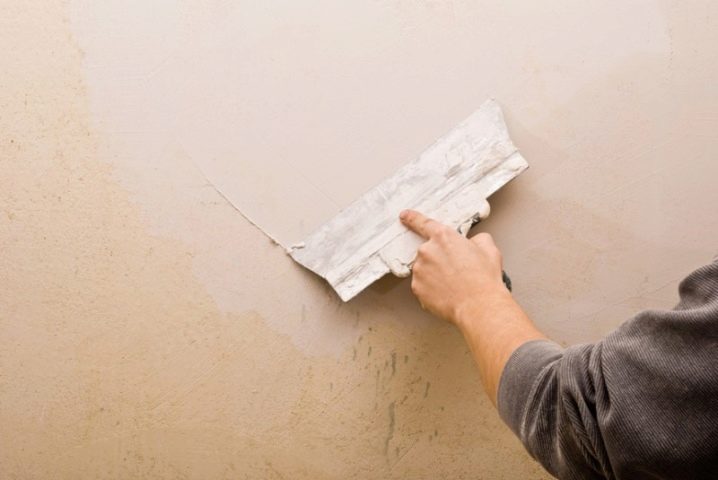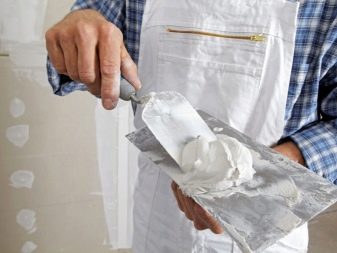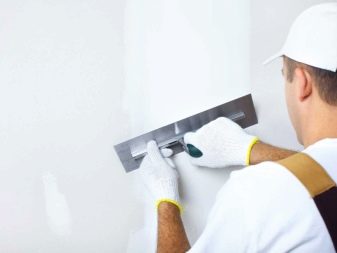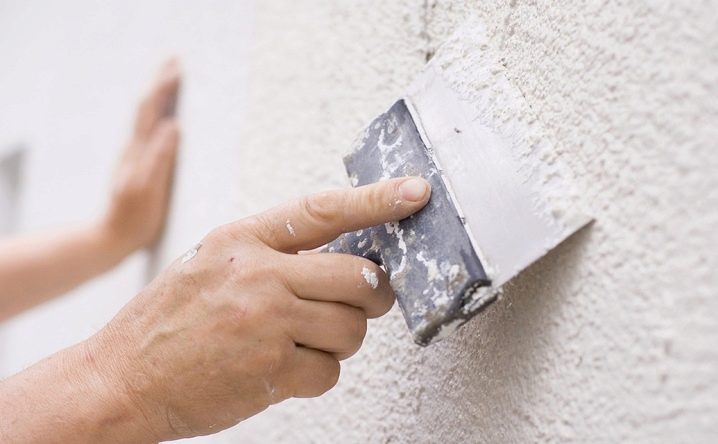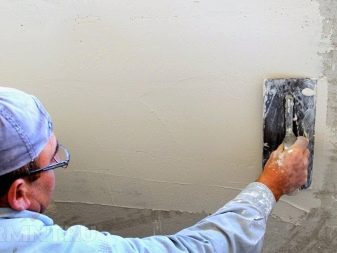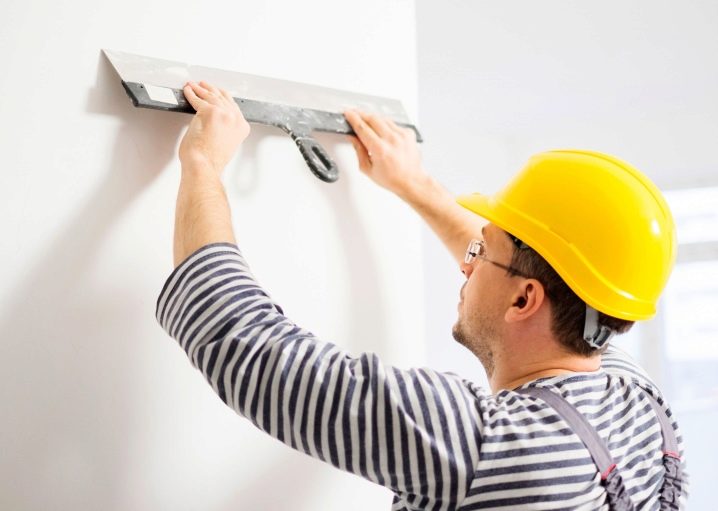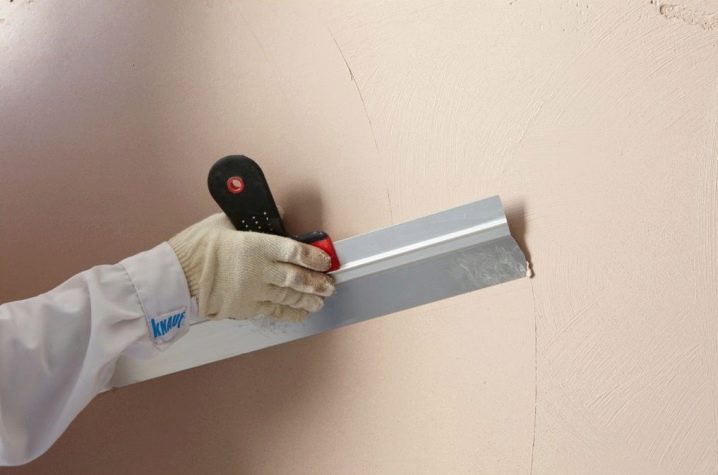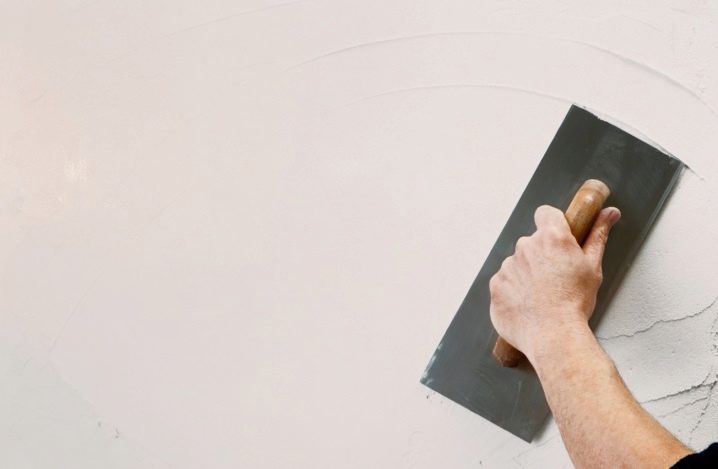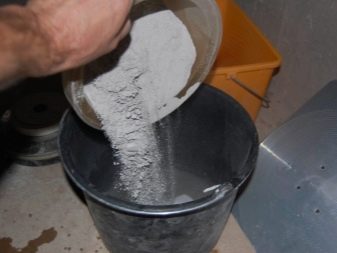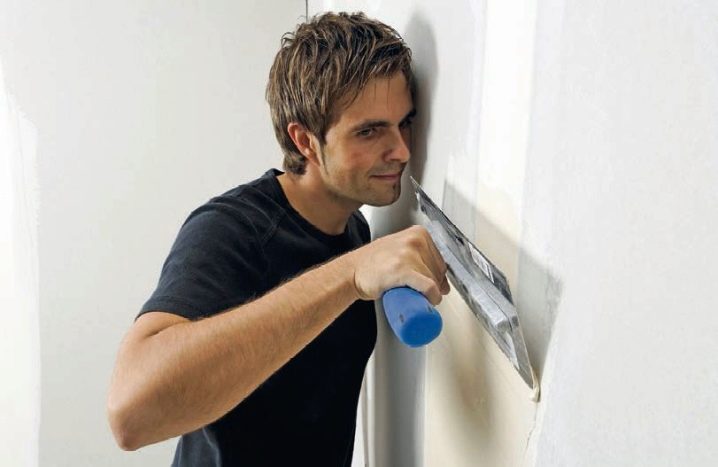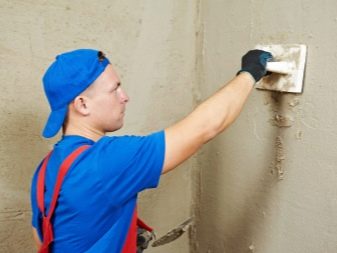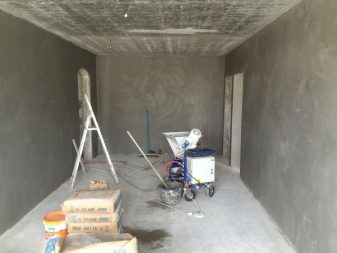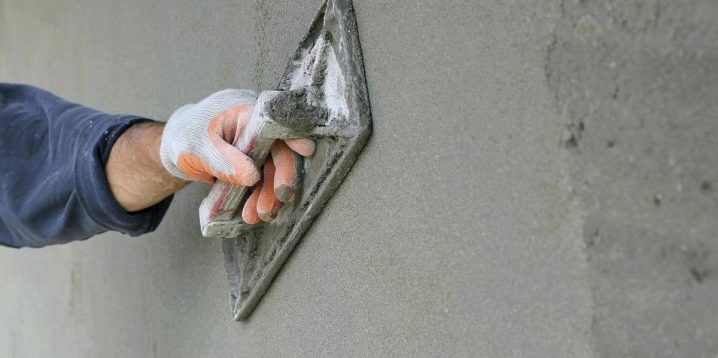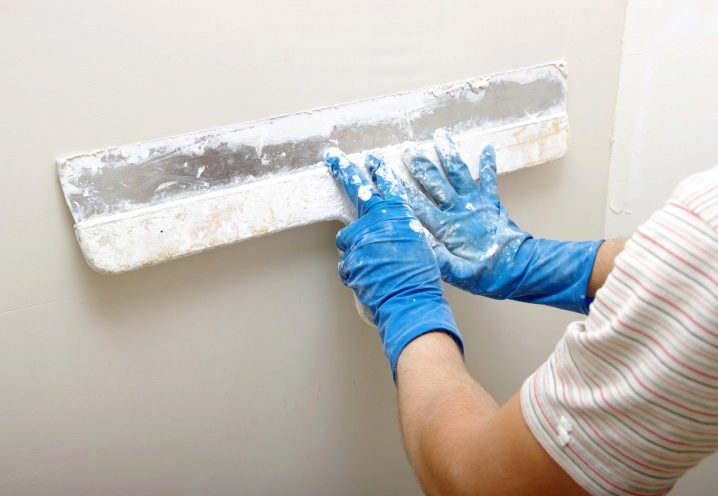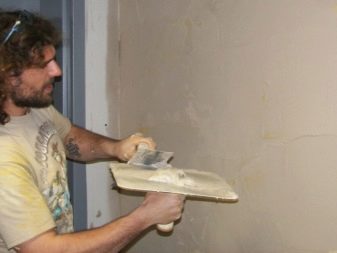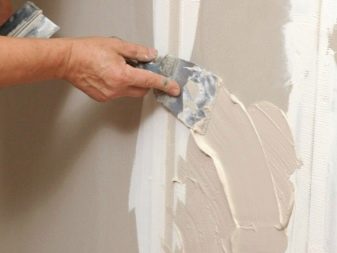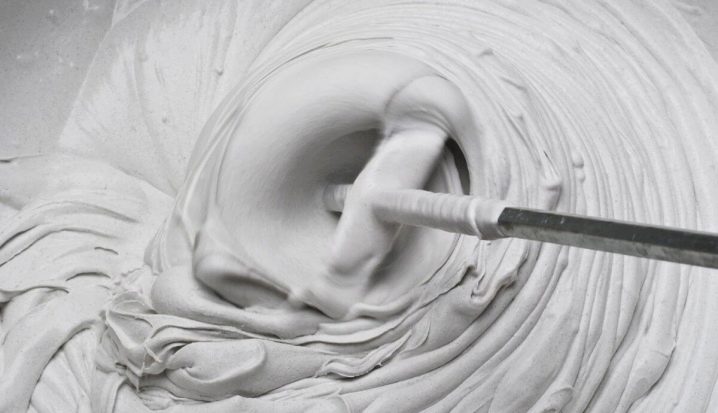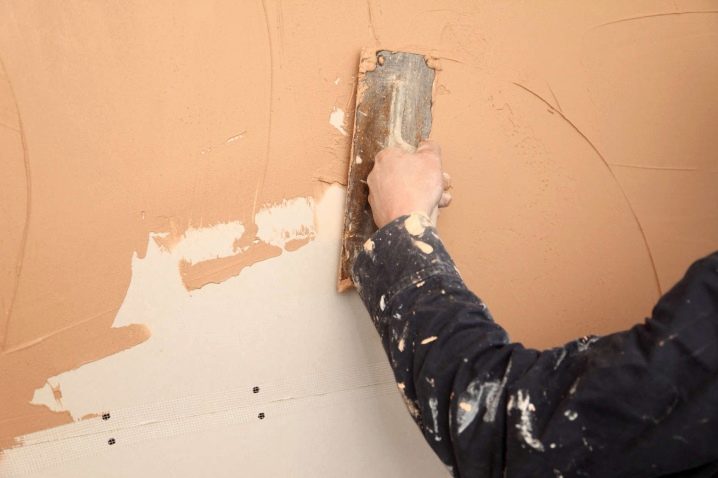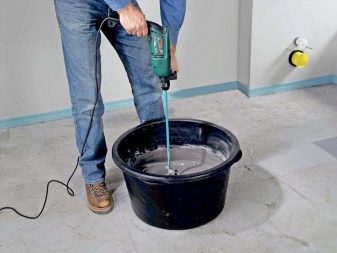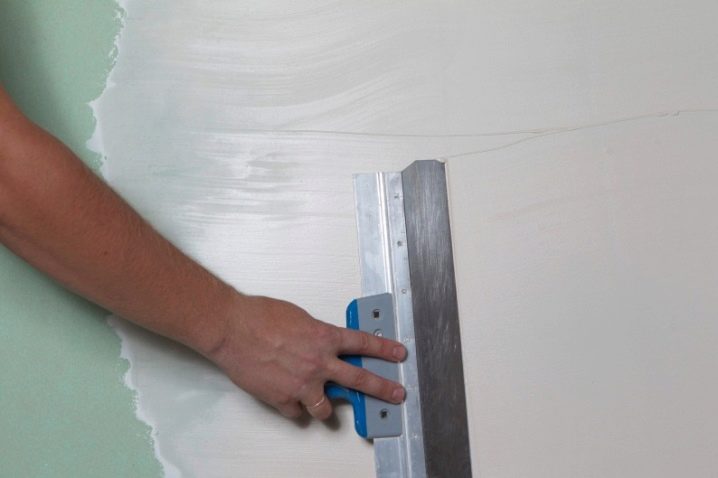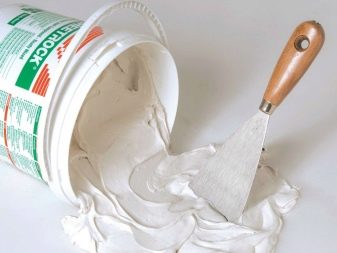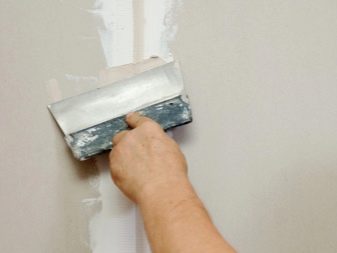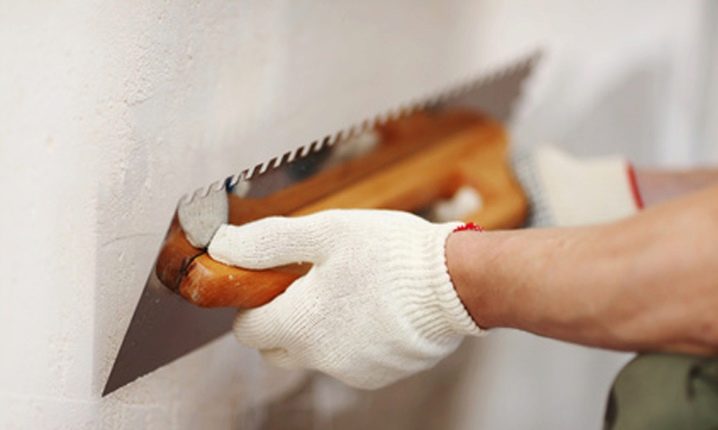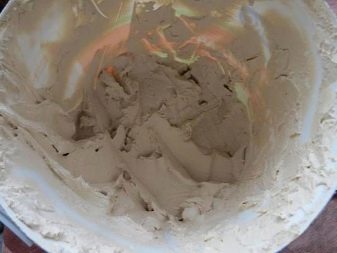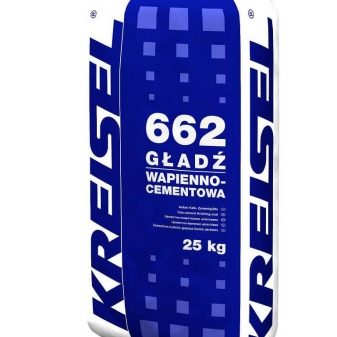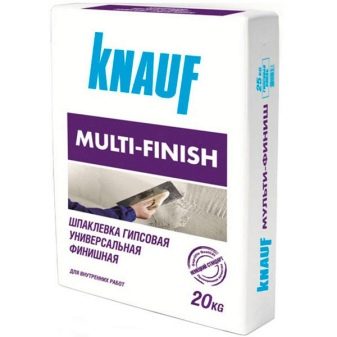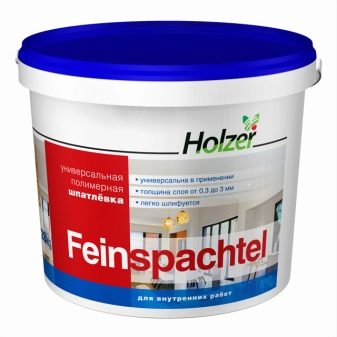Universal putty: features of choice
Putty is one of the stages of high-quality wall and ceiling decoration. Such mixtures have mostly positive reviews, the instruction will help to make it knead correctly. We find out the features of choice.
Criterias of choice
In order to properly select a universal putty suitable for specific needs, it is necessary to take into account a number of key factors.
It is important to find out:
- she gets off the inside or outside walls of the building;
- the type of surface to be applied to the mixture;
- resistance to aggressive effects on the finished surface (humidity, temperature difference, mechanical damage);
- qualities that the finishing surface should have (smoothness, plasticity, strength, color);
- whether further finishing work will be carried out or the putty will face the walls.
Under some finishing materials there are optimal types of fillers. If this material will be the front surface, special attention should be paid to color. The timing of the work will be important. Dry putties are stored for a long time, finished without special additives have a strictly limited shelf life. The budget of finishing works is one of the main factors.
To understand which universal putty is best suited, you need to pay attention to the requirements for starting and finishing putty, which is replaced by a universal look.
Starting putty should:
- it is good to align even significant wall irregularities up to 10 mm and more;
- be plastic, otherwise cracks form after drying;
- have good adhesion: stick together with the surface material at the molecular level, otherwise peeling from the surface is possible;
- be durable.
The basic requirements for finishing putty are as follows:
- the surface should be flat and smooth;
- it must be polished;
- the material should have an aesthetic appearance (if the putty will face the wall without further finishing), especially color.
A special point is strength.Durable universal putty well withstands mechanical stress. It is advisable to use it in gyms, children's rooms, places of entertainment, entertainment centers and places of human activity. It is harder to grind, which complicates further finishing work.
Another subtlety is the choice of finishing materials of the same brand. For example, primer and putty from one manufacturer were developed and tested for phased joint use. The interaction of such materials with each other will be guaranteed quality.
Additional specific criteria may be advanced:
- moisture resistance;
- resistance to temperature;
- ecological composition;
- biological inertness;
- fire safety;
- acid resistance.
Advantages and disadvantages
The individual advantages of universal putty include:
- ease of finishing work in comparison with the multi-layer application of a two-sided finish;
- saving time for work, taking into account the drying time of each layer when finishing the starting and finishing putty.
There is a material and cons:
- the quality of the final surface (assuming the same level of skills of finishing work) at the putty-wagon is somewhat lower;
- it is more difficult to choose a brand of putty, the quality of which will satisfy all immediate needs.
Kinds
According to the state of readiness, universal mixes are divided into two types: dry and ready-made.
- Dry To use them, you need perfect finishing skills in order to properly dilute the mixture. Otherwise, the resulting surface will be far from the desired result. The shelf life of such fillers is long. From a financial point of view, they are cheaper. Well suited to create a base on which wallpaper is glued, hiding a non-ideal surface.
- Ready. These varieties can be used immediately by opening the bucket lid. They are easy to use, convenient for those who want to make decoration with their own hands in the absence of specialized skills. The resulting surface is always flat and smooth. Such mixtures are often chosen for painting walls. The price of these putties is higher than that of dry ones.
The composition of universal fillers are divided into the following types:
- cement;
- gypsum;
- polymeric;
- water dispersion;
- oil-adhesive.
Cement
The universal mix using cement as the knitting substance was widely adopted, thanks to the low price. It is often used in the finishing works of large areas (repairs of public utilities, schools, kindergartens, decoration of the entrances of apartment high-rise buildings and other objects).
It has its own characteristics:
- There are certain requirements to get a good solution: you need a special sand of a large fraction (1.5-2.5 mm), otherwise cracks will appear on the dried layer (the solution should be mixed with water up to 20 degrees).
- The rate of hardening of the finished solution is in the range from 5 to 24 hours, depending on the specific composition.
- The applied layer gives a large shrinkage, so that re-application is part of the process.
- Due to the inelasticity of the cement mixture, the chance of cracking even under the technical process is very high.
- The resulting surface is grainy and rough to the touch.
Such material:
- evens large (more than 10 mm) surface defects effectively;
- not suitable for putty wood surfaces;
- easily tolerates high humidity;
- frost resistant;
- high strength;
- difficult to grind.
The original blend, when cured, acquires an unaesthetic yellowish-gray color; there are marks with additives through which the color of the material becomes white and super-white. This factor in a key way determines the price of the cement mixture (it ranges from 120 to 330 rubles per 10 kg).
Gypsum
Such a universal mixture is often used for finishing cement and plasterboard surfaces. The low price and ease of use have made it popular among people without experience in decorating.
Gypsum putty peculiar to:
- ease of kneading dry mix;
- good application on leveling surface;
- short drying time of the applied layer;
- no unpleasant pungent odor;
- no shrinkage (therefore not cracked);
- smooth and smooth surface after finishing;
- compliance to grinding;
- fire safety;
- natural composition.
It is an excellent base for further staining, does not emit toxic substances, does not provoke allergies. Low moisture resistance makes it unsuitable for use in bathrooms and kitchens, where humidity and temperature fluctuations are a constant phenomenon.This putty enhances the insulating properties of the wall. It can be stored for a long time without losing quality.
It is characterized by low strength: it is poorly opposed to vibration and mechanical loads, not suitable for finishing children's rooms, sports halls.
Water dispersion
It is implemented as an acrylic-based water-dispersion solution ready for use.
Such universal mixtures characteristic:
- easy application on various types of surfaces (concrete, brick, wood, stone, gas concrete);
- exhibit high adhesion (glued to the working surface);
- shrink slightly at around 2%;
- it is good to resist moisture (fillings of this type are used for bathrooms, kitchens and other wet rooms);
- resistance to temperature changes.
It is possible to change the finished composition by adding filler resins with obtaining additional desired qualities (for example, enhancing strength or elasticity).
Such putties:
- easy to sand;
- have a low cost;
- refractory.
The thickened solution can be diluted with a small volume of water. The advantage is the absence of a sharp building odor.
Polymer
Universal mixtures of this type are made on the basis of acrylic and latex. This is a relatively new type of putty, which is sold in the form of dry mixes and ready diluted solutions that are popular with beginners because of their ease of handling. Such varieties exhibit many positive qualities, which is offset by high cost.
These qualities include:
- ability to level significant flaws of the wall;
- excellent smooth and smooth surface;
- soundproofing walls.
The finished surface is well suited for decorative finishes. Due to the high vapor permeability of the room does not dampen. Good moisture resistance causes the use of this putty in bathrooms, kitchens and other wet areas. Biologically inert composition prevents the growth of mold and the growth of fungi (the best choice for the bathroom).
The characteristic building odor of such material is absent. Acrylic composition can be used for exterior and interior applications. This putty has a high resistance to aggressive weather phenomena (rain, snow, heat), it is highly resistant to mechanical stress.Latex composition due to poor frost resistance is used only for internal work. Such material does not shrink, it is plastic, durable and durable.
Oil-adhesive
This type of finishing materials uses drying oil as a binder. Consists of natural chalk, carboxymethyl cellulose glue, various plasticizers and dryers.
The features of such mixtures are:
- ease of application on various types of surfaces (brick, concrete, wood, plasterboard, plastered);
- taking into account certain temperature conditions (the temperature should not be lower than 10 degrees with a humidity of air not higher than 65-70 percent);
- high adhesion (property to stick together with the surface material at the level of molecules);
- short drying time of the applied layer (3-4 hours), which significantly reduces the total amount of time spent on the finish (the last layer should dry for 24 hours);
This material is an excellent base for staining with enamels, oil and water-dispersion paints. Good ductility results in the absence of cracks. This putty is amenable to grinding, it is durable. Natural ingredients do not provoke allergic reactions.Financially material is the most affordable among all types of putty.
There are disadvantages to this raw material:
- low strength makes it unstable to mechanical loads and vibrations;
- this putty is distinguished by weak moisture resistance (it is expedient to apply only in dry rooms);
- the structure quickly hardens, in this connection it is worth paying special attention to the shelf life when buying and calculate the time to final use.
Such material should be stored at a constant temperature. At a low storage temperature, a one-time freezing is allowed, with repeated mixture becomes unsuitable for finishing work.
Brand universal fillers
- Kreizel 662 - a product of the German manufacturer, the composition based on cement and lime. Additional additives enhance resistance to mechanical stress and vibration. The mixture has no restrictions on the level of humidity. The process determines the applied layer of at least 3 mm for the guaranteed absence of cracks. The price of a universal mix is around 350 rubles for a bag of 25 kg.
- Knauf Multi-finish - gypsum mix with German mineral filler.There are polymer modifiers, especially plastic, dries quickly, is easy to grind. When processing gives the surface according to standard Q4. Excellent aesthetic appearance, used for decorative finishes. The price of this mixture is about 370 rubles for 25 kg.
- Holzer feinspachtel - universal polymer putty ready type. It is distinguished by high vapor permeability, medium moisture resistance. It is easy to sand, apply a layer of up to 3 mm on various types of surfaces. Can be used to create embossed decorative coatings. Price for 28 kg. the bucket ranges from 960 to 1100 rubles.
- Among the well-known manufacturers can also be noted Novol Uni, Axton and VGT. Brand products enjoy special success with the masters.
How to putty the walls under the wallpaper, see the next video.

